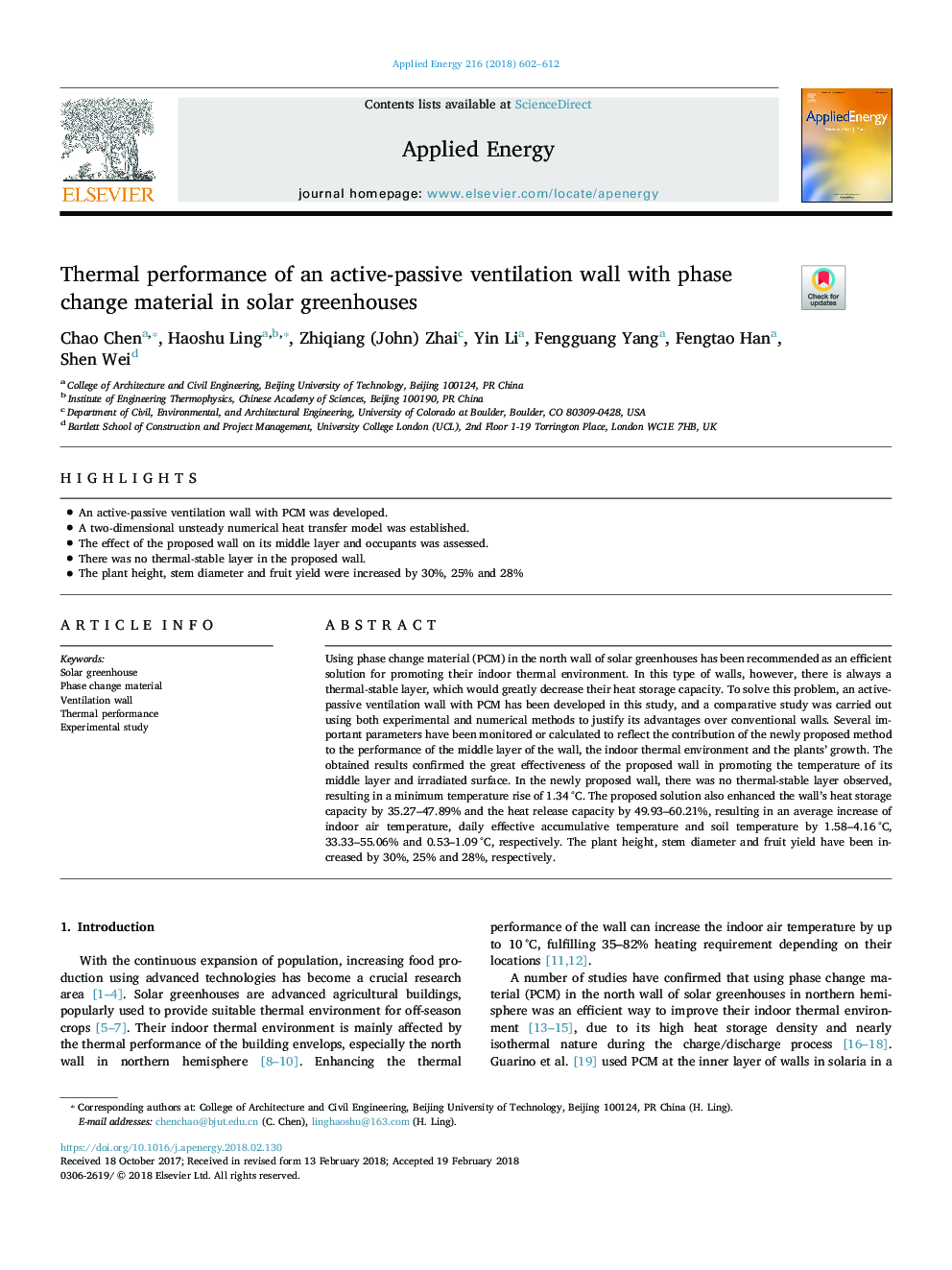| Article ID | Journal | Published Year | Pages | File Type |
|---|---|---|---|---|
| 6680618 | Applied Energy | 2018 | 11 Pages |
Abstract
Using phase change material (PCM) in the north wall of solar greenhouses has been recommended as an efficient solution for promoting their indoor thermal environment. In this type of walls, however, there is always a thermal-stable layer, which would greatly decrease their heat storage capacity. To solve this problem, an active-passive ventilation wall with PCM has been developed in this study, and a comparative study was carried out using both experimental and numerical methods to justify its advantages over conventional walls. Several important parameters have been monitored or calculated to reflect the contribution of the newly proposed method to the performance of the middle layer of the wall, the indoor thermal environment and the plants' growth. The obtained results confirmed the great effectiveness of the proposed wall in promoting the temperature of its middle layer and irradiated surface. In the newly proposed wall, there was no thermal-stable layer observed, resulting in a minimum temperature rise of 1.34â¯Â°C. The proposed solution also enhanced the wall's heat storage capacity by 35.27-47.89% and the heat release capacity by 49.93-60.21%, resulting in an average increase of indoor air temperature, daily effective accumulative temperature and soil temperature by 1.58-4.16â¯Â°C, 33.33-55.06% and 0.53-1.09â¯Â°C, respectively. The plant height, stem diameter and fruit yield have been increased by 30%, 25% and 28%, respectively.
Related Topics
Physical Sciences and Engineering
Energy
Energy Engineering and Power Technology
Authors
Chao Chen, Haoshu Ling, Zhiqiang (John) Zhai, Yin Li, Fengguang Yang, Fengtao Han, Shen Wei,
